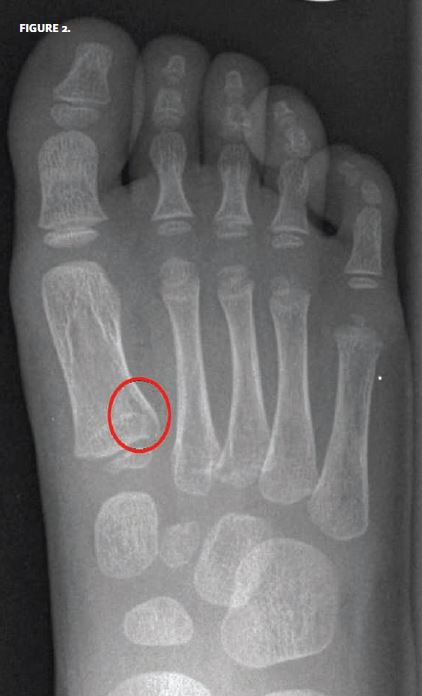Resolution

The correct diagnosis is a fracture of the first metatarsal.
The first metatarsal is distinctive, compared with the other metatarsals, in that it is shorter and wider; in addition, it lacks interconnecting ligaments between itself and the second metatarsal, which allows for independent motion.
Three types of fracture predominate: avulsion, proximal shaft, and mid-shaft.
Any instability of the fracture requires operative fixation, which can take the form of a simple lag screw, plate (across the cuneiform) or, in the case of a comminuted fracture, an external fixator device. Accurate open reduction and bone grafting may be needed if the fracture extends into the articular surface. Lacking evidence of instability or of other fracture in the forefoot, a short leg plaster of paris (POP) cast may be applied, with weight bearing as tolerated. An alternative would be a removable Aircast boot, with the position of the foot in the cast plantigrade (on the soles) with no dorsal pressure on the first metatarsal.
Acknowledgment: Case presented by Nahum Kovalski, BSc, MDCM.

